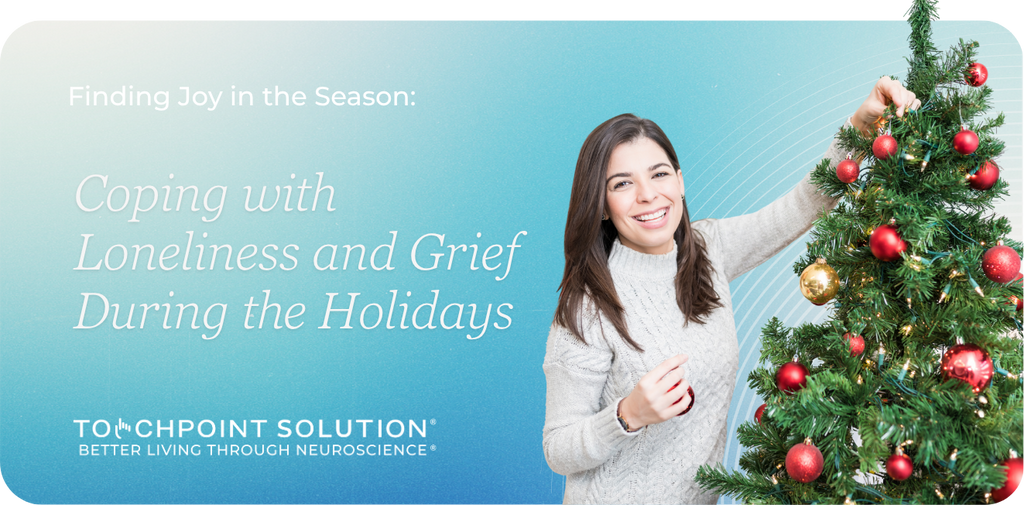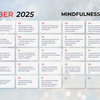Finding Joy in the Season: Coping with Loneliness and Grief During the Holidays

Holidays are often portrayed as a time of togetherness and celebration, wrapped in the cozy spirit we see everywhere. But sometimes, the cold feels a little colder — filled with loneliness, longing, or grief. Whether you’re missing someone you love or struggling to feel connected, it’s okay if this season feels more painful than picture-perfect.
The truth is, holiday grief and loneliness are more common than we think. A report on The Most Difficult Time of the Year: Mental Health During the Holidays found that 64% of people experience holiday-related anxiety or sadness, with grief and social isolation as leading triggers. When the world around you is celebrating, it can be difficult to process your own emotions and even harder not to feel like you’re falling behind.
But healing doesn’t mean forcing joy — it means finding gentle ways to nurture yourself through the moments that feel heavy and rediscover peace in small, steady ways.
Why the Holidays Can Feel Especially Heavy
There’s something about the holidays that amplifies what’s missing. Memories, traditions, and unspoken expectations can all resurface, sometimes when you least expect them. You might notice old photos bringing tears, or certain songs stirring emotions that feel both sweet and painful.
Psychologists explain that this mix of nostalgia and loss activates the brain’s emotional centers, increasing holiday sadness and depression even in people who typically feel stable. Add in shorter days and less sunlight, and it’s easy to see why loneliness often feels sharper in December.
Understanding that these feelings are a natural response — not a failure — is the first step toward coping with grief during the holidays.
Small Ways to Reconnect with Joy After Loss
You don’t need to force yourself to feel festive. Instead, try creating space for quiet, meaningful moments of connection — with yourself, with others, or with the memory of who or what you’ve lost.
Here are a few gentle ways to cope with holiday loss and rediscover small joys:
- Create a memory ritual. Light a candle, cook their favorite meal, or share a story about your loved one. Rituals help turn pain into presence.
- Simplify your commitments. It’s okay to say no to events or people that feel draining. Protect your energy.
- Spend time in nature. Fresh air and movement can ease emotional heaviness and help regulate your nervous system.
- Reach out — even if it feels hard. Text a friend, join an online support group, or volunteer. Connection restores a sense of belonging.
- Allow both joy and sadness. Emotions can coexist. You can miss someone deeply and still laugh, decorate, or find comfort in small traditions.
Finding joy after loss doesn’t mean erasing pain — it means allowing sadness and warmth to coexist, moment by moment. These micro-moments of mindfulness help strengthen your emotional balance during the holidays — a quiet yet powerful part of holistic mental health.
Every act of gentle care is a reminder: you deserve peace, even in grief.
Coping Tools for Holiday Grief
When emotions feel overwhelming, grounding yourself in the present can bring relief. Simple coping tools for holiday grief — such as breathing exercises, guided meditations, or mindfulness moments — help calm intrusive thoughts and physical tension.
Many people also find comfort in tactile tools that offer immediate relief from emotional overload. That’s where TouchPoints™ can help.
TouchPoints are wearable devices designed to reduce stress and anxiety using gentle, alternating vibrations known as BLAST (bilateral alternating stimulation tactile) technology. This pattern helps your brain move out of a fight-or-flight state, promoting calm and clarity in just 30 seconds.
In moments when grief feels heavy or loneliness creeps in, TouchPoints provide a physical sense of reassurance — a quiet signal that helps your body feel safe again.
Case Study: Introducing TouchPoints into a Mental Health Routine
In our case study, Introducing TouchPoints into a Mental Health Routine, one user shared how consistent use of TouchPoints helped them manage anxiety symptoms linked to loss.
Participants reported feeling calmer and more centered in their day-to-day lives after integrating TouchPoints into their regular self-care practices.
For those navigating holiday grief and loneliness, this kind of support can make a meaningful difference. When you wear TouchPoints during high-stress moments — such as family gatherings, sleepless nights, or emotional anniversaries — they help regulate your nervous system, allowing space for healing and reflection rather than overwhelm.
Explore the Science Behind TouchPoints
How TouchPoints Support Emotional Balance
Grief and loneliness don’t disappear overnight but having a tool that helps you feel physically calmer can make emotional healing more accessible. When your body feels safe, your mind has space to process and heal.
Here’s how consistent use of TouchPoints supports emotional balance during the holidays:
- Healthier Sleep
- Lower anxiety levels during emotional peaks
- Improved mindfulness and focus
- A greater sense of emotional control and self-compassion
These small physiological shifts accumulate over time, helping you restore emotional balance during the holidays and beyond.
Finding Peace One Step at a Time
Healing after loss is not about “getting over it.” It’s about finding ways to live with your grief while still allowing yourself to experience hope and connection.
So if this holiday season feels lonely or different, give yourself permission to feel it. Care for yourself through it — gently, without pressure or expectation.
Light a candle, take a walk, wear your TouchPoints, and remember even the smallest acts of self-kindness help you move closer to peace.
If you’re ready to explore gentle, science-backed support this season, discover how TouchPoints can bring calm to moments of grief or holiday stress.
-
Posted in
Anxiety, Depression, Health, Moms/Families, Sleep, Stress




